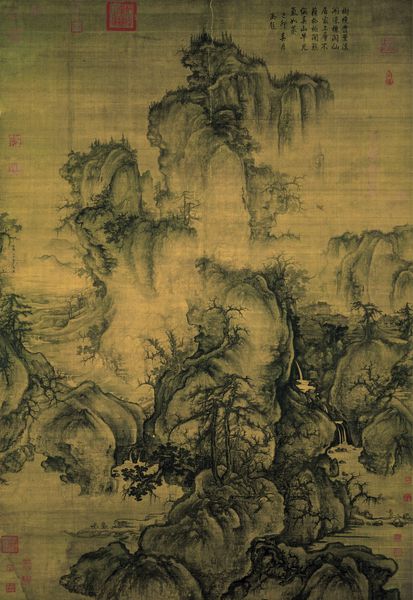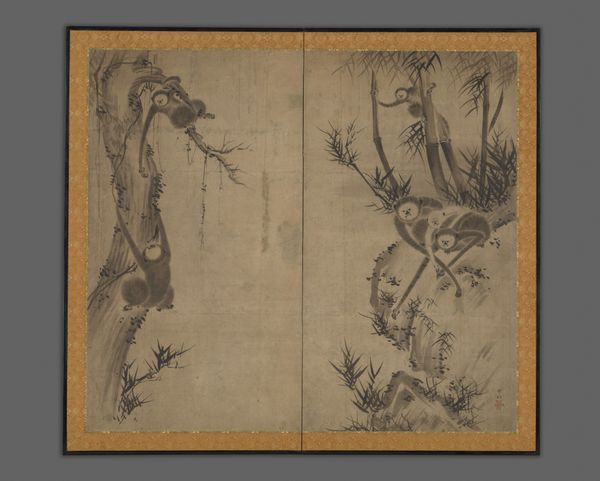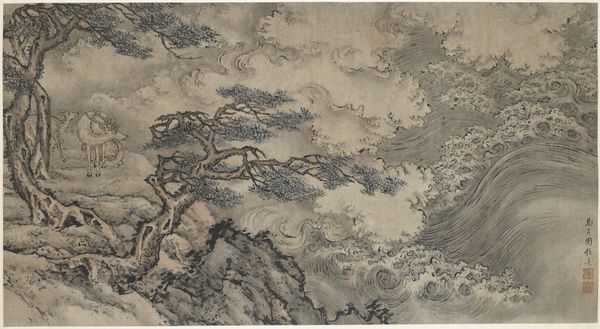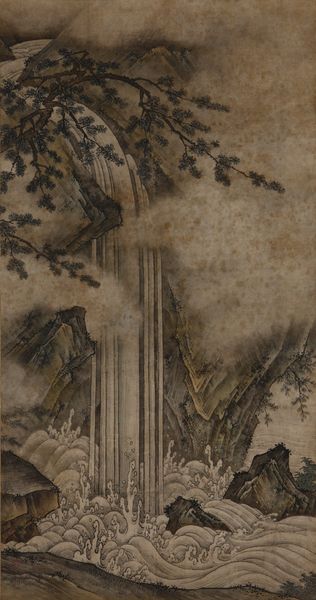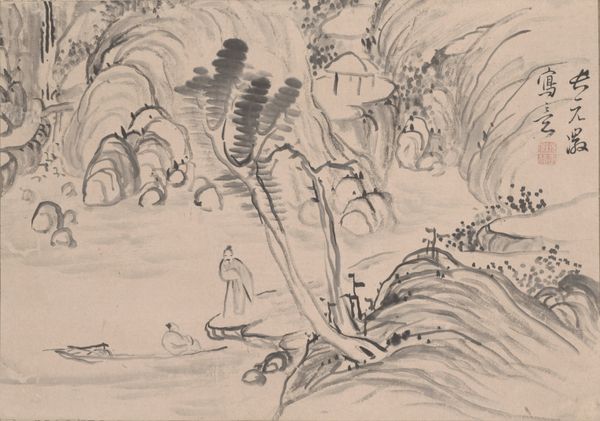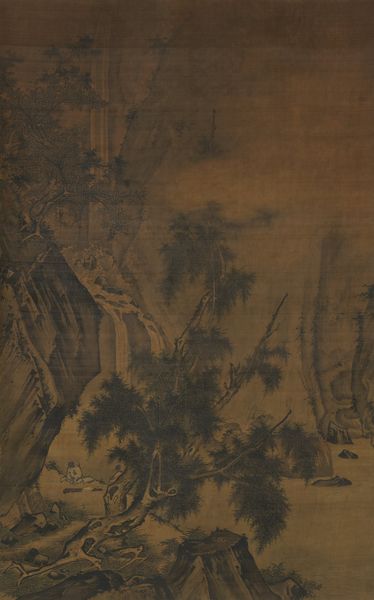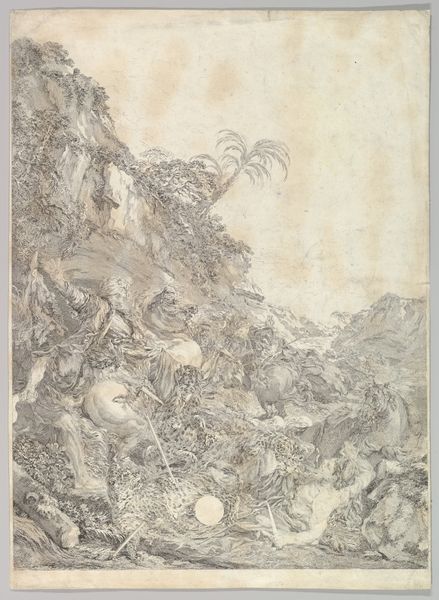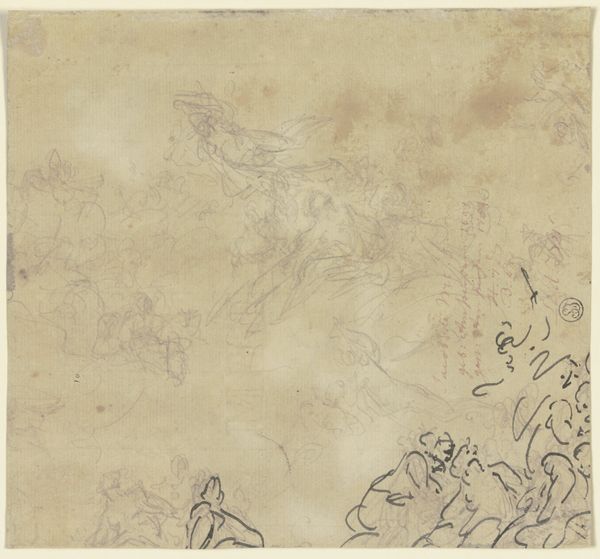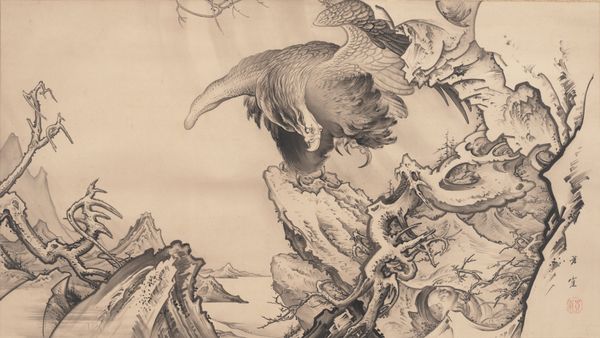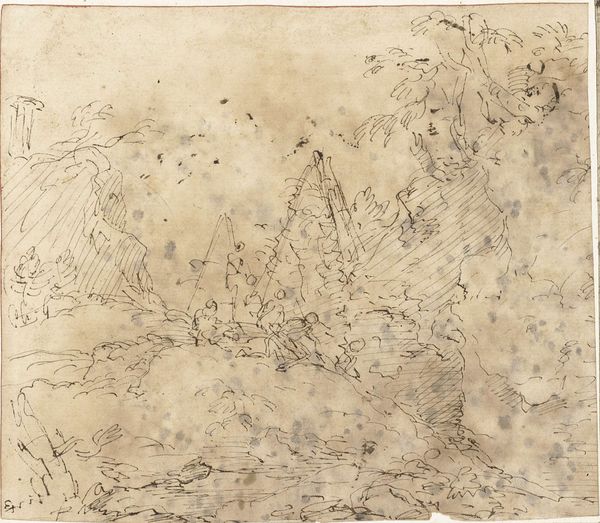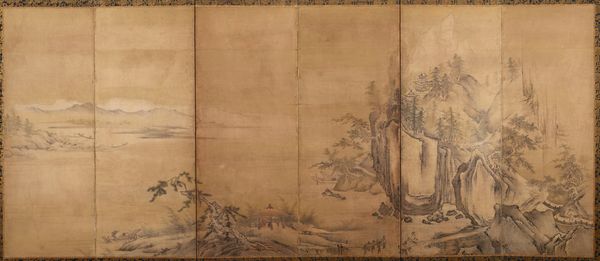
hanging-scroll, ink
#
asian-art
#
landscape
#
japan
#
hanging-scroll
#
ink
#
abstraction
#
line
#
watercolor
Dimensions: 43 1/2 × 13 3/8 in. (110.49 × 33.97 cm) (image)75 1/8 × 18 5/16 in. (190.82 × 46.51 cm) (mount, without roller)
Copyright: Public Domain
Yokoi Kinkoku created this ink on paper hanging scroll, "Road to Shu," using techniques deeply rooted in traditional East Asian painting. The delicate strokes and washes of ink create a misty, atmospheric landscape, inviting the viewer into a contemplative journey. The artist coaxes depth and texture from the paper through skillful brushwork, building up layers of ink to suggest towering mountains and hidden valleys. The absorbent quality of the paper allows the ink to bloom and spread, creating soft, blurred edges that enhance the dreamlike quality of the scene. Traditional tools such as the bamboo brush grant the artist a wide range of marks, from fine lines to broad, sweeping strokes. Kinkoku masterfully employs the concept of "留白" or negative space, leaving areas of the paper untouched to represent mist, water, or distant mountains. This technique not only adds depth but also invites the viewer to actively engage with the artwork, completing the scene in their mind's eye. The artwork's visual impact lies not only in what is depicted, but also in what remains unsaid, inviting a deeper reflection on the relationship between humans, nature, and the artistic process itself.
Comments
minneapolisinstituteofart almost 2 years ago
⋮
The road to Shu, the old name of Sichuan Province, was famous for its precarious passages along sheer cliffs. Parts of this road were no wider than a single person and had to be built out on poles from the face of the cliffs. Chinese poets like Li Bai (701–762) composed poems on this hard to manage trail that leads up Mount Emei (Jap. Gabi). One of the Four Buddhist Sacred Mountains of China, Mount Emei is 10,167 ft. (3,099 m) tall. Yokoi Kinkoku was a follower of Yosa Buson and imitated him even in his style of calligraphy. He painted in a rapid and spontaneous manner and was especially successful in capturing the vibrancy of mountains and rocks. Toward the end of his life he became a wandering Buddhist priest of the Jōdo (Pure Land) school. Irregularly and richly shaped, the mountains go high up in the painting. Travelers in the foreground are crossing a bridge and we see others at intervals on the slope that climbs up the mountains. Black ink dotting and live-ly outlines give the rocks a rich texture.
Join the conversation
Join millions of artists and users on Artera today and experience the ultimate creative platform.
